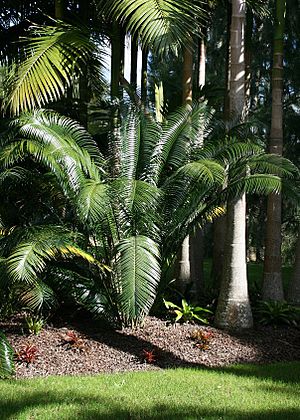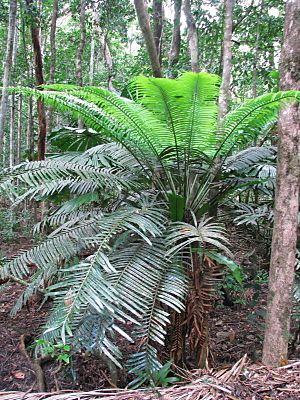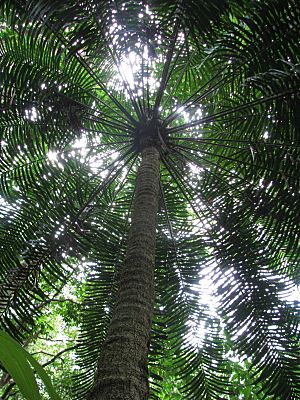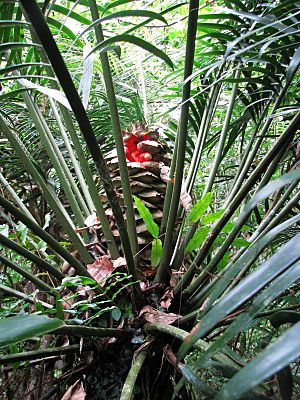Lepidozamia facts for kids
Quick facts for kids Lepidozamia |
|
|---|---|
 |
|
| Lepidozamia peroffskyana | |
| Scientific classification |
|
| Kingdom: | Plantae |
| Clade: | Tracheophytes |
| Division: | Cycadophyta |
| Class: | Cycadopsida |
| Order: | Cycadales |
| Family: | Zamiaceae |
| Subfamily: | Encephalartoideae |
| Tribe: | Encephalarteae |
| Subtribe: | Macrozamiinae |
| Genus: | Lepidozamia Regel |
| Synonyms | |
|
Catakidozamia W.Hill |
|
Lepidozamia is a special group of plants called cycads. There are only two types, or species, of Lepidozamia. Both of them grow naturally only in Australia. You can find them in the rainforests of eastern Queensland and eastern New South Wales.
Contents
What's in a Name?
The name Lepidozamia comes from an old Greek word, lepis. This word means "scale." If you look closely at the stem and where the leaves join, you'll see parts that look like scales. That's how these plants got their name!
Meet the Species
There are two main types of Lepidozamia plants. They are Lepidozamia hopei and Lepidozamia peroffskyana. Both are unique and important parts of Australia's plant life.
Lepidozamia hopei
Lepidozamia hopei is found in northern Queensland, Australia. This amazing plant holds a record! It is known as the tallest living cycad in the world. Some of these plants can grow up to 17.5 meters (about 57 feet) tall. That's like a five-story building!
Lepidozamia peroffskyana
Lepidozamia peroffskyana grows in southeastern Queensland and northeastern New South Wales. This species was first studied in a botanical garden in St. Petersburg in 1857. This shows how these plants can be grown far from their natural homes.
About These Cycads
Lepidozamia plants usually grow as a single, tall stem. They don't have many branches. Their old leaf bases stay on the stem, giving them a scaly look. These plants are also quite easy to grow in gardens. They can even handle some cold weather.
See also
 In Spanish: Lepidozamia para niños
In Spanish: Lepidozamia para niños
Images for kids










